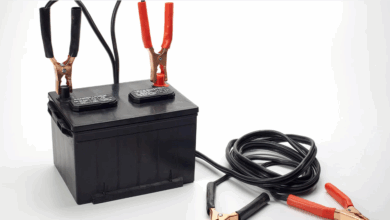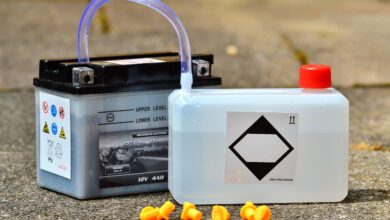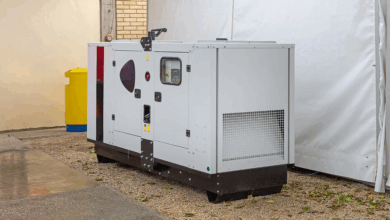Invest in Preparedness: The Value of a 5000 Watt Generator

Invest in Preparedness: The Value of a 5000 Watt Generator
Power outages are no longer a rare inconvenience; they are an increasingly common reality, driven by everything from severe weather events and aging infrastructure to unexpected grid failures. When the lights go out, life as we know it grinds to a halt. Food spoils, heating and cooling systems fail, communication becomes challenging, and basic safety is compromised.
In this unpredictable landscape, preparedness isn’t just a hobby for a dedicated few; it’s a crucial aspect of modern resilience. And at the heart of a robust home or business preparedness plan often sits a reliable generator. While options range from small, portable units to massive, whole-house systems, the 5000-watt generator often emerges as a compelling "sweet spot" – offering significant power capability without the prohibitive cost, size, and complexity of larger units. Investing in a 5000-watt generator isn’t just buying a piece of equipment; it’s buying peace of mind, security, and the ability to weather the storm.
Why Preparedness Matters (and Why a Generator is Key)
The immediate impacts of a power outage are obvious: darkness, silence from electronics, a rapidly warming refrigerator. But the consequences run deeper. For families with infants or elderly members, consistent power for medical devices, climate control, or even just access to warm food is critical. For anyone, food spoilage can result in hundreds of dollars lost. Communication becomes vital for checking on loved ones or accessing emergency information, but needs power to keep devices charged or run internet modems. A generator provides the independence to address these essential needs when the grid cannot.
Moreover, outages can last hours, days, or even longer. Relying solely on flashlights and hoping for the best is a recipe for discomfort, anxiety, and potential danger. A generator transforms a helpless waiting game into an active state of managing the situation, maintaining essential functions until power is restored.
The 5000-Watt Sweet Spot: What it Can Power
Understanding generator wattage is key. Generators are rated by both running watts (the continuous power they can supply) and starting watts (the brief surge of power needed to start motor-driven appliances like refrigerators or pumps). A 5000 running watt generator typically has a higher starting wattage, often around 6000-6250 watts, providing that crucial initial surge.
So, what can 5000 watts realistically power during an emergency in a typical home or small setup? It’s enough to handle critical loads, offering a significant level of functionality:
- Kitchen Essentials: A refrigerator (around 150-300 running watts, but needing a significant starting surge) and a freezer (similar power needs) can be kept running simultaneously, saving hundreds in spoiled food. A microwave (1000-1500 watts) can be used for heating food, though you’ll need to manage other loads.
- Climate Control Basics: The blower fan on a gas furnace (300-500 watts) is essential for circulating heat in colder months. While 5000 watts typically won’t run a central air conditioner’s compressor (which requires 2000-4000+ running watts plus a massive starting surge), it can often power a window AC unit (500-1500 watts) for a crucial room or two, offering relief in summer.
- Water Management: A sump pump (800-1500 watts running, significant starting watts) is vital for preventing basement flooding, especially during storms that cause outages.
- Lighting: Keeping multiple lights on throughout the house (modern LED lights use very little power) ensures safety and visibility.
- Communication & Electronics: Charging phones, laptops, running a modem/router (very low wattage), and powering a television (100-300 watts) for news or comfort are easily handled.
- Medical Needs: Powering critical medical equipment like CPAP machines (30-60 watts), oxygen concentrators (around 300-500 watts), or nebulizers is a life-saving capability. (Always have a backup plan and consult medical providers for critical, life-sustaining equipment).
- Small Appliances: Coffee makers (800-1500 watts), toasters (800-1500 watts), or power tools for emergency repairs can be run, again with mindful load management.
Crucially, 5000 watts allows you to power a combination of these items simultaneously, allowing you to prioritize and rotate usage as needed, rather than being limited to just one or two basic necessities. It provides a much higher level of functional living compared to smaller generators (under 3000 watts) which might only handle a fridge, lights, and charging. It’s also significantly more portable and less expensive than larger generators (7500+ watts) that might be able to run more circuits or a central AC, but come with higher fuel consumption and installation complexities.
The Value Proposition: More Than Just Electricity
The value of a 5000-watt generator in preparedness extends far beyond the simple ability to generate electricity:
- Food Security: The most immediate and tangible financial return on investment. Preventing a refrigerator/freezer full of food from spoiling easily justifies the cost of a generator over a few outages.
- Safety and Security: Keeping lights on reduces trip hazards and provides a sense of security. Powering a sump pump prevents potentially catastrophic and expensive basement flooding. Running security systems offers continued protection.
- Comfort and Morale: Maintaining some level of heating/cooling, the ability to cook a hot meal, or simply having lights on vastly improves comfort and morale during a stressful situation. This is especially valuable for families with children.
- Communication Hub: Keeping phones, laptops, and internet running allows access to emergency services, news updates, and the ability to check in with loved ones, combating isolation and aiding coordination.
- Medical Reliability: For those dependent on medical equipment, a generator can be a lifeline, ensuring critical devices remain operational.
- Independence and Control: In a situation where the grid is down and resources might be stretched thin, having your own power source provides a crucial sense of independence and control over your immediate environment.
- Avoiding Displacement Costs: In prolonged outages, losing heating, cooling, or preventing flooding can make a home uninhabitable, forcing costly temporary relocation to hotels. A generator can help avoid this.
- Peace of Mind: Perhaps the greatest value is the intangible benefit of knowing you are prepared. This reduces anxiety during warning periods and empowers you when an outage actually occurs.
Making the Investment
Choosing a 5000-watt generator involves considering fuel type (gasoline, propane, or dual-fuel for flexibility), runtime (dictated by fuel tank size and load), and features like electric start. Safety is paramount – generators must never be run indoors due to carbon monoxide risk. Proper ventilation and safe connection methods (like a transfer switch installed by an electrician for connecting directly to your home’s panel, or using heavy-duty extension cords for individual appliances) are essential.
While the initial cost of a quality 5000-watt generator and necessary accessories (fuel storage, cords, transfer switch if desired) is an investment, the potential losses in food, property damage, and the immeasurable value of safety, comfort, and peace of mind during an emergency make it a prudent and valuable part of any comprehensive preparedness strategy.
FAQs About 5000 Watt Generators
- What appliances can a 5000W generator typically run? A 5000W running generator (with higher starting watts) can power essentials like a refrigerator, freezer, lights, furnace fan, sump pump, charging electronics, and potentially a window AC or microwave (managing the load carefully).
- Is 5000 watts enough to power my whole house? Generally, no. It’s designed to power critical circuits or appliances, not the entire house simultaneously like normal. For whole-house power (including central AC, electric stoves, etc.), significantly larger generators (7500W+) and often a professional transfer switch installation are needed.
- What’s the difference between running watts and starting watts? Running watts are the continuous power a generator supplies. Starting watts are the brief surge needed to start motors in appliances (like fridges, pumps, ACs), which is often 2-3 times higher than their running wattage. A generator’s starting watt rating indicates its ability to handle these surges.
- How long can a 5000W generator run? This varies greatly depending on the generator’s fuel tank size, the fuel type, and how much power you are drawing (the load). A larger load consumes fuel faster. Runtimes can range from 8-12 hours at half load on a typical tank.
- Gasoline vs. Propane vs. Dual-Fuel? Gasoline is readily available but has a shorter shelf life. Propane stores longer and burns cleaner but is less energy-dense (you need more of it). Dual-fuel offers flexibility, allowing you to switch between gas and propane.
- Do I need a transfer switch? For safely connecting a generator directly to your home’s electrical panel to power hardwired circuits (like the furnace fan, sump pump), a transfer switch is highly recommended or required by code. For powering appliances via extension cords, a transfer switch isn’t strictly necessary but ensure cords are rated for outdoor/heavy-duty use and run safely.
Conclusion
In an era where power reliability is increasingly uncertain, proactively preparing for outages is a responsible and empowering step. A 5000-watt generator occupies a practical and valuable niche, offering the capability to power the essential systems that keep your family safe, comfortable, and connected during a crisis. It protects valuable assets like food and property, supports critical medical needs, and provides an invaluable layer of independence and peace of mind. Viewing the purchase of a 5000-watt generator not as an expense, but as a strategic investment in your household’s resilience, highlights its true and lasting value in today’s unpredictable world.




![How to Bypass CO Sensor on Generator – [4-Step Safety Guide]](https://www.generator411.com/wp-content/uploads/2025/08/co-sensor-on-generator-390x220.png)